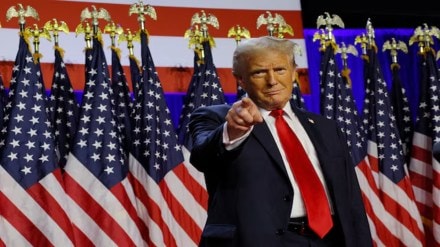In a dramatic turn of events, the United States and China have reached a breakthrough agreement to ease tariffs—marking a significant step toward de-escalating a trade war that has rattled global markets and cast uncertainty over the world economy. The truce, announced after high-level talks in Geneva, has sparked a wave of reactions from global stakeholders. But this isn’t the first time President Donald Trump has used hardline rhetoric and high-stakes negotiations to influence trade outcomes. Since taking office, Trump has pursued a bold and confrontational approach to trade diplomacy—engaging countries like the UK, India, Japan, and more in a series of tariff-driven showdowns. Here’s a look at some of the key moments.
US-China Trade War
The trade standoff with China escalated rapidly in early 2025. On February 1, Trump imposed a 10% tariff on all Chinese imports. China retaliated the same day with sweeping duties on American goods and launched an anti-monopoly investigation into Google. Additional rounds of tariffs followed: China’s 15% levies on coal and LNG, and a 10% tariff on crude oil and large-engine cars, took effect on February 10. By March 4, the U.S. had raised tariffs to 20%, prompting China to impose 15% duties on American farm products.
The situation worsened on April 2—Liberation Day—when Trump hiked tariffs to 34%. A week later, U.S. tariffs soared to 145%, and China responded with a 125% increase on American imports. The tit-for-tat measures sent shockwaves through the global economy. However, on May 12, both sides agreed to a temporary truce, promising to roll back most tariffs and countermeasures by midweek.
UK-US trade agreement
Trump also claimed a win on the UK front. On May 8, the two nations announced a deal that reduced or eliminated tariffs on select UK exports, including steel, aluminum, and automobiles. While Trump’s 10% blanket tariff still applied to many UK goods, the agreement allowed increased U.S. exports of beef and ethanol to the UK, boosting agricultural trade.
Is India reaching an agreement with the US?
According to Reuters, India has proposed a significant reduction in its average tariff gap with the United States—from nearly 13% to under 4%—in a bid to secure an exemption from both current and potential U.S. tariff hikes under president Donald Trump. If accepted, the move would mark one of the most substantial steps India has taken to lower trade barriers, slashing the tariff differential by 9 percentage points. This average is calculated across all products without factoring in trade volume. The United States is India’s largest trading partner, with bilateral trade reaching approximately $129 billion in 2024. However, the trade balance tilts in India’s favour, with a $45.7 billion surplus. Last month, Trump announced a 90-day pause on his long-anticipated reciprocal tariff plans, including a proposed 26% duty on Indian goods. During this window, negotiations are underway. Meanwhile, a base 10% tariff remains in place for India and several other trading partners.
Broader Trade Talks: Mexico, Canada, Japan, and the EU
Trump’s aggressive tariff policy extended beyond China and the UK. The U.S. initially imposed 25% tariffs on products from Mexico and Canada, later suspending them on goods that fell within the USMCA. However, items outside the scope of the agreement remain subject to tariffs.In a Truth Social post dated April 17, 2025, Trump said, “Had a very productive call with the President of Mexico yesterday. Likewise, I met with the highest level Japanese Trade Representatives. It was a very productive meeting. Every Nation, including China, wants to meet! Today, Italy!”
During Italian Prime Minister Giorgia Meloni’s visit to the White House, both leaders expressed confidence in a forthcoming U.S.-Europe trade deal—even though Meloni does not speak for the entire 27-member EU. “There will be a trade deal, 100%,” Trump declared. “They want to make one very much, and we are going to make a trade deal, I fully expect it, but it will be a fair deal.” Meloni echoed the sentiment, saying, “I’m sure we can make a deal.” For now, the EU remains subject to a baseline 10% U.S. tariff, with a 90-day pause on any increases. The bloc has delayed its own retaliatory measures until July 14 to allow negotiations to continue.
